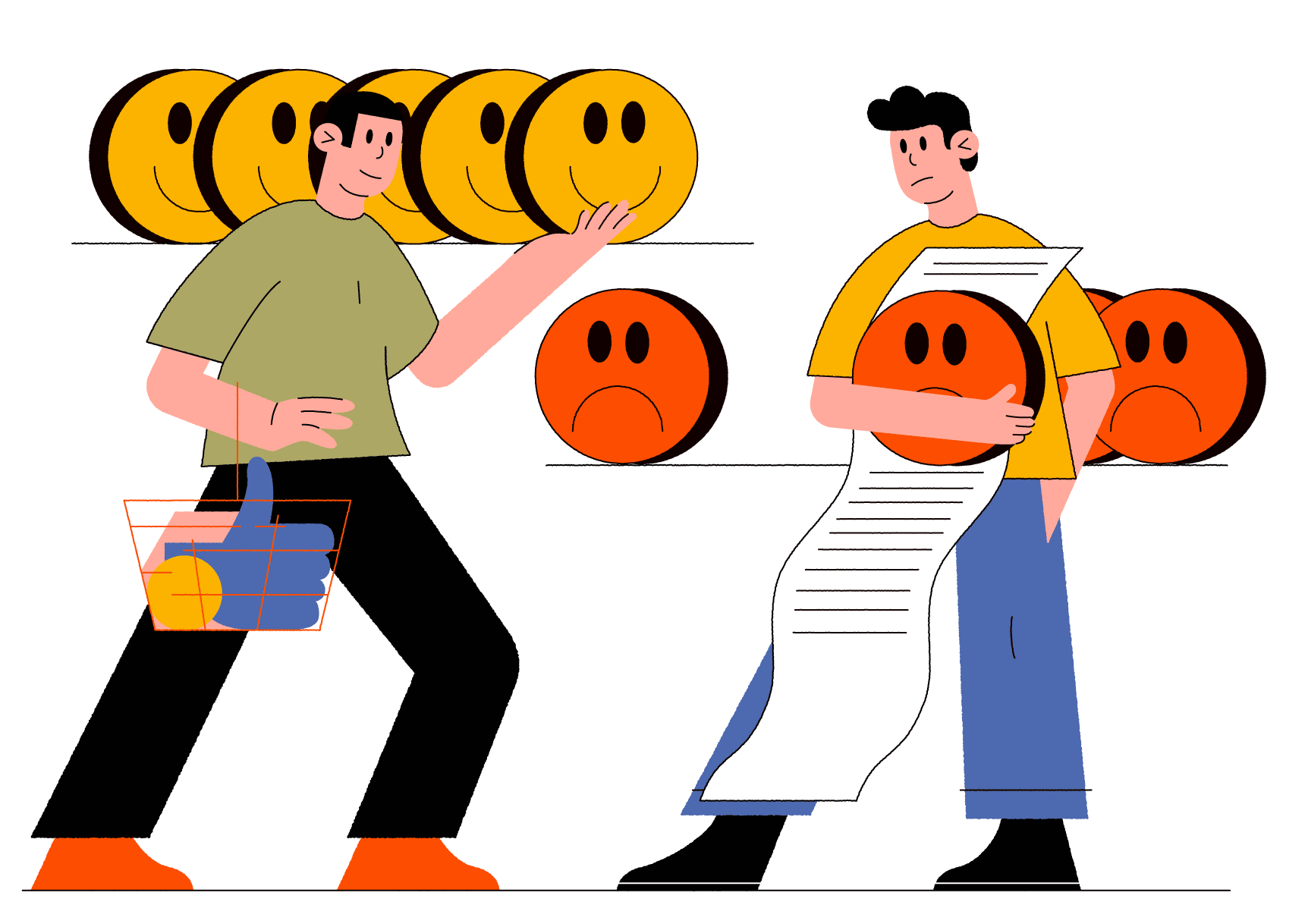Ways to Collect Feedback
The short answer to “How do I collect customer feedback?” is: every way you can. Anytime you interact with your customers, you should be enthusiastically willing to hear their feedback. However, a more structured way of collecting and encouraging feedback from all of your customers can provide a more robust picture of your customer’s needs and expectations.

As Help Scout points out, there are multiple ways to collect data from your users. Of the eight methods they list, all are part of two high-level types of feedback: explicitly requested and implicitly given. Feedback comes in many different forms and often the key to collecting it is simply recognizing it.
Explicitly Requested Feedback
Recognizing feedback is easy when it is explicitly requested. If you ask your customers questions, some of them will give you answers. You can ask for feedback in a variety of channels and formats — and in fact, the more chances you provide customers to share their opinion, the better! Examples of explicitly requested feedback are:
- Customer surveys
- User Testing
- Customer Interviews
In each of these formats, you (the company) is reaching out to the customer to ask them about something specific. These kind of guided feedback surveys can help gather opinions on a specific change or aspect of your product or service.
Implicitly Given Feedback
It is more challenging to recognize feedback when it is implicitly given, ie. given organically during a discussion, meeting, or as part of a support ticket. With either type of feedback, it can be incredibly easy to not action what you’ve received.
Listening for Voice of Customer feedback is difficult. It can take the form of an 'off-the-cuff' remark in a sales or support call, a post on social media, or a sigh in a quarterly business review. Whenever a customer expresses an opinion on something, whether through verbal or non-verbal cues, that is feedback that could be used to better your product or service. Train yourself and your employees to listen for these cues, document them, and submit them into a common process to be actioned and you will quickly see exactly where your company needs to evolve. In addition, start to track and frequently review answers to questions such as:
- Why did we lose that deal?
- Why did that customer churn?
- Why is this customer choosing to stay with our offering?
- What drives our customers' loyalty?
These questions can easily be asked as part of your internal process or regular customer communications. Once these questions are answered, you start to understand gaps that need to be filled or places where you excel. Use that information to keep doing the things that are working and stop doing the things that are not. The mistake is that companies often treat this as a quarterly or even yearly action and not an exercise in continuous improvement. Making these changes quickly and visibly makes customers feel like they have been heard and generates strong word of mouth praise.
Customers are kept happy when you do more of what they love and less of what they hate. That includes all types of feedback. How can you maximize your ability to take in feedback and make meaningful change based on it? Let’s examine some best practices.